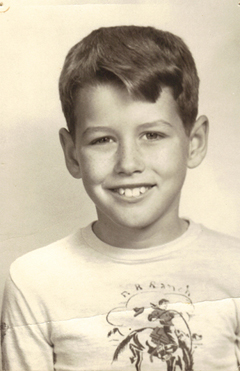This article is the work of Lloyd Rowsey and Laurel Steele.
It is the second part of a multi-part series. See Part 1 by clicking here.
Part 1 contains two paragraphs of introductory materials about Watson’s photography, from artnet’s Artist Works Catalogues. There follow three more paragraphs from this source:
“Born and raised in Edinburgh, Scotland, Albert studied graphic design at the Duncan of Jordanstone College of Art and Design in Dundee, and film and television at the Royal College of Art in London. Though blind in one eye since birth, Albert studied photography as part of his curriculum. In 1970, he moved to the United States with his wife, Elizabeth, who got a job as an elementary school teacher in Los Angeles, where Albert began shooting photos, mostly as a hobby.”
“Later that year, Albert was introduced to an art director at Max Factor, who offered him his first test session, from which the company bought two shots. Albert’s distinctive style eventually caught the attention of American and European fashion magazines such as Mademoiselle, GQ and Harper’s Bazaar, and he began commuting between Los Angeles and New York. In 1975, Albert won a Grammy Award for the photography on the cover of the Mason Profitt album Come and Gone, and in 1976, he landed his first job for Vogue. With his move to New York that same year, his career took off.”
“Despite the enormous stress from all of his commissioned assignments, Albert devotes much of his time to extensive personal projects, and he has published three books: Cyclops (1994); Maroc (1998); and a retrospective called simply Albert Watson that was released by Phaidon in November 2007. A fourth book, Shot in Vegas, is in the works and due out in 2010. In addition, many catalogs of Albert’s photographs have been published in conjunction with museum and gallery shows over the years. Since 2004, Albert has had solo shows at the Museum of Modern Art in Milan, Italy; the KunstHausWien in Vienna, Austria; the City Art Centre in Edinburgh; the FotoMuseum in Antwerp, Belgium; and the NRW Forum in Düsseldorf, Germany. Albert’s photographs have also been featured in many group shows at museums, including the National Portrait Gallery in London, the Pushkin Museum of Fine Arts in Moscow, the International Center of Photography in New York, and the Deichtorhallen in Hamburg, Germany. His photographs are included in the permanent collections at the National Portrait Gallery and the Metropolitan Museum of Art in New York.”
The following six photographs were all taken by Albert Watson in 1979 in revolutionary China, four years after America withdrew its invading forces from South Vietnam. Nixon and Kissinger had played their 'China Card' in an effort to get China to bring pressure on North Vietnam to surrender: Nixon had gone to visit Mao in Beijing. Subsequently, Watergate forced Nixon out of office, and Gerald Ford and then Jimmy Carter became presidents of the United States. So, these pictures - by a man who was to become one of America’s greatest fashion photographers - were taken at a time very few Americans considered China and Chinese culture worth thinking about, just two years before Ronald Reagan became America’s 40th president in 1981.
Laurel Steele’s prefatory comment applies to all six of these remarkable black-and-white pictures:
‘Each image resonates with all the possibilities of all our pasts, our presents, and our futures. There is joy in all those possibilities!’
-
-
‘A boy off to school or returning from the market, this scene could as easily have been on any of the earth’s six warm continents.’
-
And
-
-
‘Waiting on the steps of an observatory or a temple or a playhouse, another boy scans the horizon, perhaps hoping to catch sight of his parents hurrying to fetch him. The beauty of the architecture seems to emphasize the potential of the child.’
-
And
-
-
‘Our son, or grandson, or boyfriend, not yet fully grown, preparing a salute to send home to parents or to a sweetheart. Here the youth has not yet grown, and his serious, conscientious concern for duty has not mixed with life experiences that crease the brow and cheek with laughter or harden the jaw with disappointments and responsibilities. Yes, here is any one’s friend or lover or child.’
-
And
-
-
‘Only during a rain might you expect a thinning of the crowds on the streets. So a lone individual, pausing in a crosswalk, offers a lonely moment, a haunting question of what if…
-
And
-
-
‘A joyful, generous greeting filled with welcome – this is not a poverty-stricken, oppressed farm worker slaving for others. This is prosperity and humor, bright skies, and a future with a ring and watch and clean, well-groomed appearance glowing with warmth. This is a worker with more promise than a McDonald’s associate.
-
And
-
-
‘A future generation, blessed by the old ones, stretches with supple ease and balance, modeling all the components of success, beauty, grace, poise, thought, and discipline, before the watchful eye of her teddy bear.’
-
-
-(All the images and the words in double quotation marks are courtesy of the artist and of artnet and its Artist Works Catalogues. At its AWC, there is this: “artnet offers these catalogues free to the public as an educational resource. Simply click on an individual artist's image to begin, and check back often to browse new catalogues.”)





